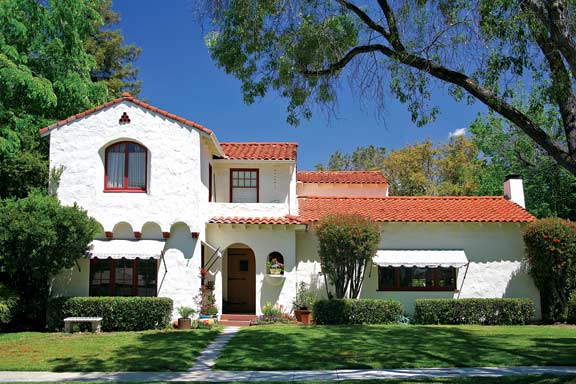Interested in Spanish colonial revival architecture? Want to know the history and characteristics of Spanish colonial architecture? Our guide gives you the facts & information you want to know.
Spanish colonial revival architecture is a style of architecture that was introduced in the United States in the 20th century. It was a very famous architecture movement that influenced many building in the United States. This style became very popular after the Panama Canal opening and also the popularization owed its publicity to the hugely successful novel Ramona. The basis of the architecture was on the Spanish colonial style and the houses were most commonly built as single built detachable houses. This movement was at the peak of its popularity between the years 1915 and 1931.
Spanish Revival Architecture
The Spanish revival form of architecture shared many resemblances with other revival movements that were in vogue at the time such as the pueblo styles of the west and Mission revival. The architecture is characterized by the use of smooth plaster of stucco on the walls and the smooth chimney finishes. Also clay tiles usually low pitched and flat roofs or sheds were used. These type of houses also included concrete ornaments that were used for decorating the balconies and lawns. These gave an artistic touch to the house and very often these ornaments were works of art commissioned out to professional artists.
Structural Form of Spanish Revival Architecture
Various other characteristics of the house were small balconies or porches. These balconies were decorated with house plants and silver coffee tables. Also, Spanish colonial revival architecture houses consisted of roman arcades which were semicircular in shape. The windows were tall and double hung in shape. The general house followed a rectangular or L plan with a lot of horizontal massing. The most loved and famous of the Spanish revival architecture was the house built by George Washington Smith. The house is now known as Casa Del Herrero and is open to the public as a museum.
The Spanish colonial revival architecture epitomizes the spirit of Santa Barbra. Its vitality and integrity give the city a Mediterranean Grace that no other style of architecture was ever able to conquer. The Spanish colonial revival architecture is a style that combines pillars and courtyards with inspiration from various other architectural sources.
The broad sources of inspiration made Spanish colonial revival architecture easy to create and was widely accepted all over the world. The romances that these Spanish colonial revival architecture buildings offered were monumental in architectural history. They brought out the national talent in architecture to a national prominence over the period of time.





